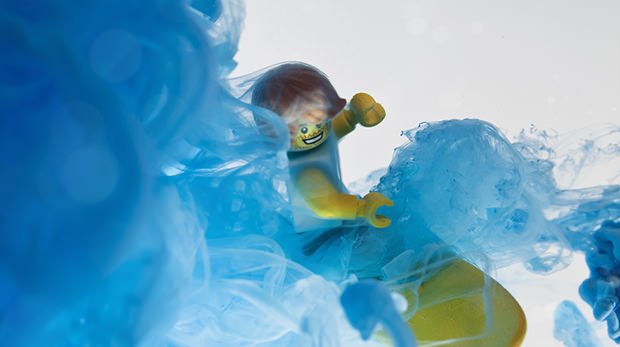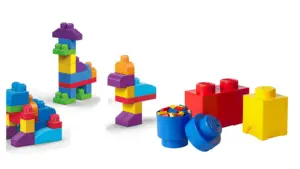So you’re planning on playing with your LEGO sets in water but are wondering whether they can go in the water?
Maybe you’re just thinking of building a custom city underwater but don’t know whether it would be a good idea or not.
Whatever your doubt is, I’m going to clear it for you right now. So can LEGO go in the water?
The answer is yes, LEGO bricks are waterproof and made of ABS (Acrylonitrile Butadiene Styrene) plastic, which is known to be waterproof and has a moisture absorption of less than one percent.
However, there are types of LEGO parts such as electronic parts, assemblies, mechanical components, and other non-traditional parts like cloth, foam, string, paper, and rubber, that should never be put into water.
Putting electronic parts like lights, sensors, motors, and battery boxes in water can cause damage and pose a safety risk.
Immersing assemblies and mechanical components in water doesn’t pose any safety risk, but they are made of multiple smaller pieces where water can get trapped and never fully dry out, which can result in mold or mildew growth.
Other non-traditional parts including foam, string, cloth, paper, and rubber bands may deteriorate when submerged in water, and stickers are likely to lose their adhesive and peel off.
Now that you have an idea about whether LEGO sets can go in the water, let’s take a look at other important things you should know.
Let’s dive in.
Table of Contents
Can LEGO Go In The Dishwasher?
Although LEGO can technically go through the washer, it is not recommended. The LEGO company has officially warned against putting LEGO pieces in the washing machine or dishwasher.
They’ve also warned against drying them in the oven, microwave, or with a hairdryer because the heat can warp the bricks, making them unusable.
LEGO capes and other fabric accessories are delicate and should not be put in the washing machine. They can get damaged easily. Avoid bending, crumpling, or throwing them in a bin.
Handwashing and air drying work best for LEGO capes and cloth materials. Do not use a dryer.
Can LEGO Figures Go In Water?

Yes, LEGO figures can go in water. They’re made of plastic, and water won’t harm them. You can put them in water or wash them in the sink, and they’ll be fine.
However, parts with stickers, motors, pistons, or lighting elements can be damaged or pose a safety risk in water.
It can also be difficult to get water out of LEGO creations because most elements aren’t airtight, and hidden spaces can trap water for a long time.
Also, avoid putting LEGO into salt water—while the ABS plastic is fine, any metal components may rust over time.
Does LEGO Degrade In Water?
No, LEGO bricks do not degrade in clean, distilled water.
If you’re using them in a fish tank or aquarium, some maintenance may be needed to keep them looking clean and clear of residue.
Can LEGO Stickers Get Wet?
No, LEGO stickers are not waterproof. While newer ones are more durable, they will eventually peel off if submerged in water. Even short exposure to water can reduce the adhesive strength and cause them to detach over time.
Can LEGO Get Wet?
Yes, LEGO can get wet. The ABS plastic used is waterproof and has a very low moisture absorption rate. However, non-traditional parts like cloth, capes, and foam can absorb water and may be damaged when submerged.
Final Thoughts
Because LEGO bricks are made of Acrylonitrile Butadiene Styrene (ABS) plastic, they are waterproof and can go in the water.
Electronic LEGO components such as motors, lights, and battery boxes should never be submerged, as they can get damaged and pose a safety risk.
Non-traditional LEGO parts, such as cloth, paper, and stickers, are also likely to get damaged in water.
And finally, don’t clean LEGO in dishwashers, washing machines, ovens, microwaves, or with hairdryers. Stick to handwashing and air drying.


